| |
|
| |
|
|
|
|
|
|
| |
 |
|
 |
|
| |
|
|
|
| |
|
Villa Palmieri and Villa Schifanoiai
|
|
|
|
| |
|
Villa Palmieri is a patrician villa in Fiesole, central Italy, that overlooks Florence. The villa's gardens on slopes below the piazza S. Domenico of Fiesole are credited with being the paradisal setting for the frame story of Boccaccio's Decameron.
The Villa Palmieri is often confused with Villa Schifanoia, which is also located on via Boccaccio. The Villa Schifanoia is at 123 via Boccaccio, which is significantly farther up the street from the Villa Palmieri, a large portion of which can be seen from that road.
History
|
|
|
|
| |
|
The villa was certainly in existence at the end of the 14th century, when it was a possession of the Fini, who sold it in 1454 to the noted humanist scholar Marco Palmieri, whose name it still bears. Matteo Palmieri (1406–1475) was born into a prosperous Florentine merchant family, and followed his father into the profession of an apothecary. In 1427, he ranked among the top taxpayers in Florence.
In 1697, Palmiero Palmieri commenced a restructuring of the gardens, sweeping away all vestiges of the earlier garden to create a south-facing terrace, an arcaded loggia of five bays and the symmetrically paired curved stairs (a tenaglia) that lead to the lemon garden in the lower level. The often-photographed lemon garden survives,[1] though postwar renovation stripped the baroque decors from the villa's stuccoed façade.[2]
Boccaccio's description of the villa in Fiesole where his young people retreated from the Black Death raging in Florence to tell stories is too general to identify any one villa securely:
To see this garden, its handsome ordering, the plants, and the fountain with rivulets issuing from it, was so pleasing to each lady and the three young men that all began to affirm that, if Paradise could be made on earth, they couldn't conceive a form other than that of this garden that might be given it.[3]
In 1760, when Florence had developed a considerable English community, the villa was acquired by the 3rd Earl Cowper.[4] Alexandre Dumas, père spent some time there, and collected his Florentine travel essays under the title La Villa Palmieri (Paris, 1843).
|
View Larger map of Villa Palmieri |
|
In 1873 Villa Palmieri was purchased by James Ludovic Lindsay, 26th Earl of Crawford who recreated part of the grounds in the fashionable English naturalistic landscape manner of parkland dotted with specimen trees, but provided also with the exotic tender plants that could not be grown in the open in England. His commissions included also the scenic basin of the Fountain of Three Faces and a little chapel in neo-Baroque manner to one side of the villa.
"Unlike the Gamberaia, " Georgina Masson observed, "Villa Palmieri has suffered from having been a 'show-place' and the alterations of many owners to suit the fashions of their day, so that little of its original character remains."[5] Today the oldest remaining parts of Villa Palmieri are the oval geometric garden[6] of lemons which are set out in warm weather ranged round the central circular basin, itself framed in quadrant spandrels, all framed in clipped low boxwood hedging, following an eighteenth-century engraving of this garden space by Giuseppe Zocchi. The upper terrace is supported on the vaults of the limonaia, glazed in the nineteenth century, where the lemon trees were protected from the very occasional hard frost. Some labels on trees record three visits of Queen Victoria to Villa Palmieri, in 1888, 1893[7] and 1894.[8]
The relations of the Villa and the Villetta in an earlier day are represented in the landscape background of Botticini's Assumption of the Virgin painted for Matteo Palmieri and unfinished at his death in 1475.[[9] |
Fancesco Botticini's Assumption of the Virgin
|
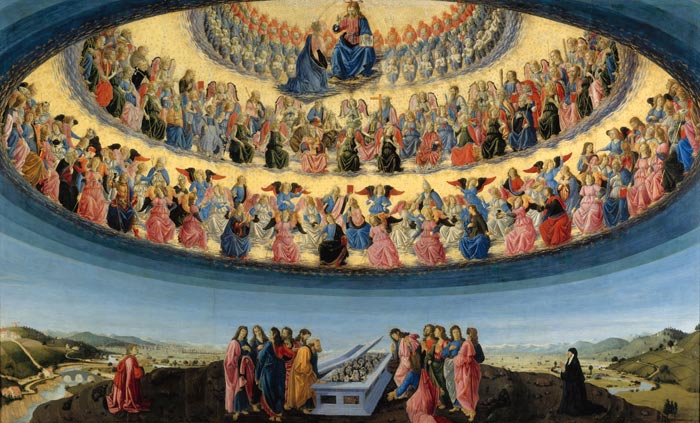 |
Fancesco Botticini (about 1446 - 1497), The Assumption of the Virgin, probably about 1475-6, egg tempera on wood, 228.6 x 377.2 cm, National Gallery, London.
|
The altarpiece was placed in the funerary chapel of the Palmieri family in San Pier Maggiore, a church belonging to Benedictine nuns in Florence.
(...) The painting was only finished after Matteo Palmieri`s death.
Matteo Palmieri is depicted kneeling on the left. Opposite him is his widow, Niccolosa, in the habit of a Benedictine nun, the Order which owned the church.
In the centre, the Apostles marvel at the tomb of the Virgin filled with lilies while above Christ receives her into the highest circle of Heaven. Angels are ranged in nine choirs, divided into three hierarchies. Unusually, saints have been incorporated into the ranks of angels.
The painting depicts Palmieri`s poem, Città di Vita and his ideas.
In his poem, Palmieri had depicted the Assumption of Mary into Heaven, the subject matter of the painting. The indecision of the Church at the time as to the actual manner in which the Virgin was taken to heaven gave artists a measure of freedom in their interpretation of events. Artists drew heavily for visual guidance on such scenes from the hagiographical book, The Golden Legend by Jacobus de Voragine (ca.1230-1298/99).[10]
After his death, Palmieris work was condemned. As regards the painting there were always rumours that Palmieri and Botticini had perpetrated heresy. This is set out by Giorgio Vasari in his Lives of the Artists. But interestingly, Vasari confuses Botticini with Botticelli and ascribes the painting to Sandro Botticelli.
|
|
|
| |
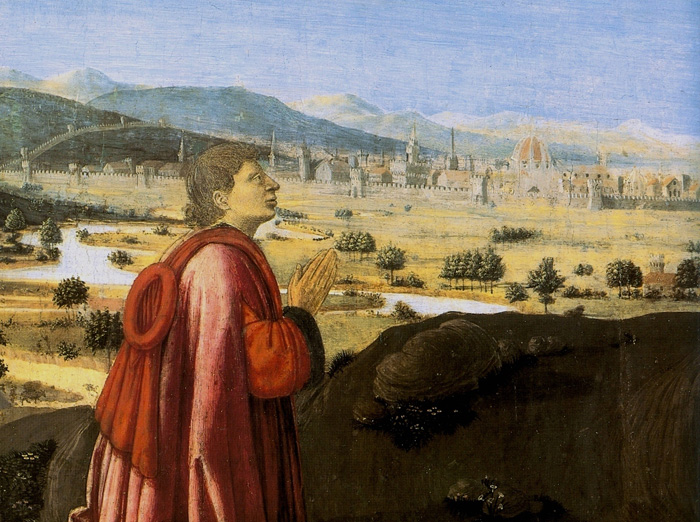 |
|
Palmieri`s family status and wealth are shown through the use of landscape in the painting. The extent of the landscape in the painting is unsual for the theme of the Assumption. Florence and Fiesole are shown.
Clearly identifiable are the Cathedral and the Palazzo Vecchio with San Pier Maggiore just behind him. Also depicted is the river Mugnone, and the bridge is probably the Ponte alla Badia. The buildings to the left are the Badia di Fiesole with the Chapel of Saint Romolo beside it. On the bank in front is the Villa Palmieri and the ‘Schifanioa’, a farm owned by Palmieri.
The landscape behind Niccolosa might depict the farms in Val d’Elsa that formed part of her dowry.
The Villa had a bust of Matteo Palmieri, which was an autheticated work by Antonio Rossellino (b. 1427, Settignano, d. 1479, Firenze) (1468). Until the nineteenth century it was displayed over the exterior portal of the house so that it is damaged and most detail effaced. It is now in the Museo Nazionale del Bargello, Florence [10].
In 1986 the villa was bought by the Italian State and converted into a European University Institute where it houses The Department of History and Civilization, The Department of Law and The Academy of European Law.
|
Villa Schifanoiai
|
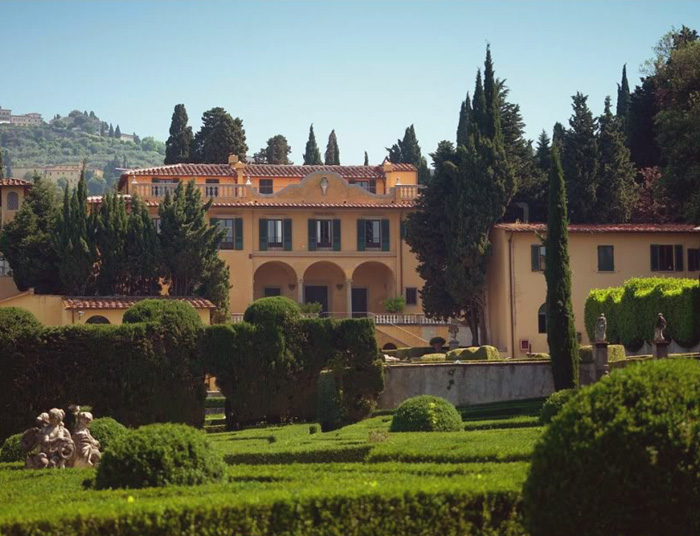 |
Villa Schifanoiai in Fiesole |
History
15th century
The villa, whose name refers to its leisure nature (its name means literally "Avoiding-boredom"), was built over the remains of a farm house at the Villa Palmieri. The central nucleus, dating to the 15th century, belonged to the Cresci family until 1550, when it was acquired by Bartolomeo di Bate di Zaccheria.
20th century
In the early nineteenth century, the English artist Joseph Mallord William Turner (1775-1851 ) visited Florence. His sketch book shows his sketches taken while he was in the Villa.[12]
In 1888, 1893 and 1894, Queen Victoria visited Florence. She stayed at Villa Palmieri and Villa Fabbricotti together with her retinue and some members of her government. She was visited there by the Italian King and Queen. At that time, the Villa was owned by the family of the Earl of Crawford and Balcarres.
In 1927, after a series of property changes, the property passed into the hands of Myron Taylor, the United States Ambassador to the Vatican during the pontificate of Pope Pius XII. Taylor restored the villa to house his own art collection and also laid out a beautiful Italian-style garden on the large stretch of land on the south side.
After a series of property changes, in 1927 it was bought by the Myron Taylor, American ambassador to the Vatican during the reign of Pope Pius XII. Taylor restored the villa to house his art collection. He created a large terraced Giardino all'italiana on the southern facade of the villa. Statues and garden vases abound in the gardens.
After his death the villa went to the Vatican and, for some time, it served as a home for American women who studied in Florence.
In 1986 Villa Schifanoiai was acquired by Italy as home to the European University Institute. Alexandre Dumas sojourned in the villa and dedicated one of his books to it.
Via Boccaccio leads to the Badia Fiesolana, Fiesole's cathedral until 1028.
|
Map
|
| |
| |
|
|
|
|
| |
|

[1] Illustrated, for example, in Georgina Masson, Otalian Gaddeens fig. 46, p. 98.
[2] The terracotta bust of Matteo Palmieri by Antonio Rossellino (1468) once in an exterior niche of the villa is now in the Museo Nazionale del Bargello, Florence.
[3]
Boccaccio, Il Decamerone, Introduction to the Third Day.
[4] Elizabeth Gibson, "Earl Cowper in Florence and his correspondence with the Italian opera in London", Music and Letters 68.3, 1987:235-252
[5] Masson p. 99.
[6] The garden measures 173 feet across, according to Chip Sullivan and Marc Treib, Garden and Climate, 2002:119f.
[7] Described in detail in The Graphic, 18 March 1893.
[8] Masson , eo. loc.;
[9] Francesco di Giovanni Botticini (1446 – July 22, 1497) was an Italian Early Renaissance painter who studied under Cosimo Rosselli and Andrea del Verrocchio. He was born in Florence in 1446 and is mostly known for his painting "Assumption of the Virgin" in the National Gallery, London showing the angelic hierarchy.
He established a workshop after a brief period as Neri di Bicci's assistant which became renowned for its decorative works, a few of which can be seen in the cloistered church of Empoli. Some of Botticini's works are said to be overshadowed by his Florentine contemporaries, such as Filippino Lippi and Botticelli, who often influenced Botticini's works. He died in Florence.
[10] Francesco di Giovanni Botticini (1446 – July 22, 1497) was an Italian Early Renaissance painter who studied under Cosimo Rosselli and Andrea del Verrocchio. He was born in Florence in 1446 and is mostly known for his painting "Assumption of the Virgin" in the National Gallery, London showing the angelic hierarchy.
He established a workshop after a brief period as Neri di Bicci's assistant which became renowned for its decorative works, a few of which can be seen in the cloistered church of Empoli. Some of Botticini's works are said to be overshadowed by his Florentine contemporaries, such as Filippino Lippi and Botticelli, who often influenced Botticini's works. He died in Florence.
See Assumption of the Virgin (National Gallery)
[11] John William Waterhouse (born between January and April 1849; died 10 February 1917) was an English painter known for working in the Pre-Raphaelite style. He worked several decades after the breakup of the Pre-Raphaelite Brotherhood, which had seen its heyday in the mid-nineteenth century, leading him to have gained the moniker of "the modern Pre-Raphaelite".° Borrowing stylistic influences not only from the earlier Pre-Raphaelites but also from his contemporaries, the Impressionists,° his artworks were known for their depictions of women from both ancient Greek mythology and Arthurian legend.
Born in Italy to English parents who were both painters, he later moved to London, where he enrolled in the Royal Academy of Art. He soon began exhibiting at their annual summer exhibitions, focusing on the creation of large canvas works depicting scenes from the daily life and mythology of ancient Greece. Later on in his career he came to embrace the Pre-Raphaelite style of painting despite the fact that it had gone out of fashion in the British art scene several decades before.
° Trippi, Peter; Prettejohn, Elizabeth; Upstone, Robert. J.M. Waterhouse: The Modern Pre-Raphaelite Gallery Guide. The Royal Academy of Art. 2009.
[12] See the online sketchbook at the Tate Gallery website, Joseph Mallord William Turner, Part of a View of Florence from Villa Palmieri, and a Smaller Sketch of the Same 1819 | www.tate.org.uk
[13] Myron Charles Taylor (January 18, 1874 – May 5, 1959) was an American industrialist, and later a diplomatic figure involved in many of the most important geopolitical events during and after World War II.
References
Giardini di Toscana, a cura della Regione Toscana, (Florence: Edifir) 2001.
Masson, Georgina, Italian Gardens.
Wharton, Edith, Italian Villas and their Gardens.

The Palmieri Assumption of the Virgin | www.idlespeculations-terryprest.blogspot.be
|
This article incorporates material from the Wikipedia articles Villa Palmieri, Fiesole, Villa Schifanoia and John William Waterhouse, published under the GNU Free Documentation License.
Wikimedia Commons has media related to Villa Schifanoia and John William Waterhouse.
|

Hidden secrets in Tuscany | Holiday house Podere Santa Pia
|
| |
|
|
|
|
|
|
|
|
|
|
Podere Santa Pia |
|
Podere Santa Pia, view from the garden
on the valley below
|
|
Florence, Duomo |
| |
|
|
|
|
|
|
|
|
|
View of Villa Certano and the hanging garden
|
|
Il parco dei Mostri di Bomarzo |
|
Villa I Tatti
|
|
|
|
|
|
Monticchiello |
|
Abbey of Sant 'Antimo |
|
Montalcino, forttress |
| |
|
|
|
|

Badia Fiesolana
|
|
|
The Badia Fiesolana is an old monastery located in the town of San Domenico, in-between Fiesole and Florence.
The monastery was built between 1025-1028 on the location of a former chapel dedicated to Saint Peter and Saint Romulus. Originally, it bore the name of Saint Bartolomeus. The present name and appearance date from between 1456 and 1467.
At the right of the monastery lays the former convent, which is now the seat of the European University Institute (EUI). Opened in 1976, it houses the office of the president, the Institute’s library, the Department of Political and Social Sciences, the Max Weber Programme and the Academic Service.
The 15th century church – which is still used for the annual EUI conferring ceremony and other events – stands on the site of the 11th century one and includes a marble façade from the 12th century of a style seen throughout Florence. The attached monastery was inhabited by Fiesole bishops that spent the 12th century embroiled in disputes with Camaldolese abbots from Arezzo province, and three centuries later the Badia reached such economic hardship it had to be bailed out by the pope.
Cosimo ‘the elder’, of the Medici political dynasty, funded the construction of the Badia complex and “thought how that place ought to be lived in by excellent and lettered men, and for this took thought to make a worthy library there,” according to a bookseller at the time. This wish was however interrupted in 1520 when the Badia was temporarily used as a hospice for the incurables of Florence’s syphilis epidemic.
Less than a decade later Charles V used the Badia for his troops’ headquarters during the siege of Florence, damaging much of the interior and cutting down the surrounding vines and olive trees.
[Source: European University Institute 2013 | www.eui.eu]
Badia Fiesolana, Via della Badia dei Roccettini 9
Open Monday-Friday 9am to 5:30pm, Saturdays 9-12:30pm. Closed Sundays.

The hillside of Fiesole is certainly the most beautiful and the most famous around the area of Florence and is very well known by tourists, cyclists and trekkers. There are several recommended itineraries for the healthy walker or runner.
Walking in Tuscany | From Fiesole to Settignano
This itinerary runs from Fiesole to Settignano and takes about two and a half to three hours. |
|
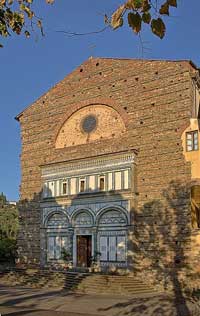 Fiesole, Badia fiesolana, close to Fiesole, Badia fiesolana, close to
Villa Schifanoiai
|
|
|
|
| |
|
|
|
| |
|
|
|
| |
|
|
|
| |
|
|
|
| |
|
|
|
| |
|
|
|
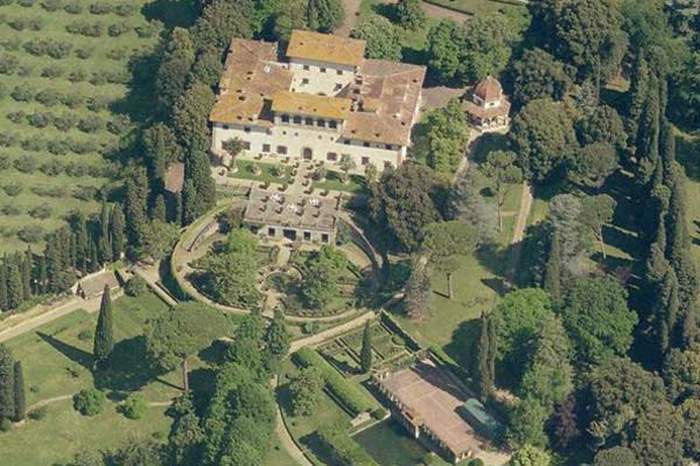









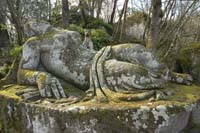
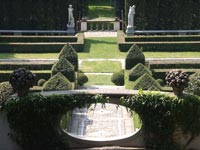
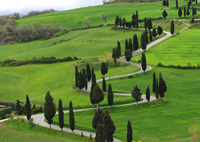
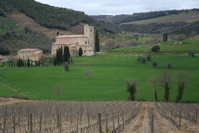
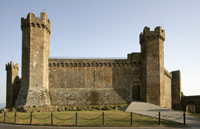
 Fiesole, Badia fiesolana, close to
Fiesole, Badia fiesolana, close to